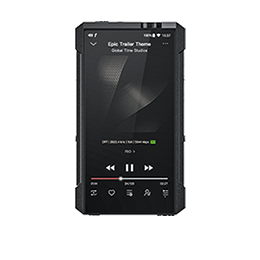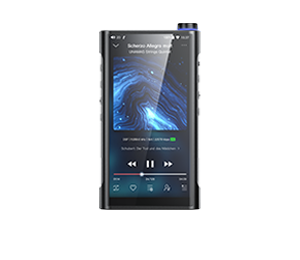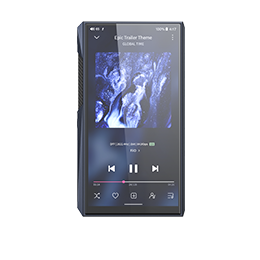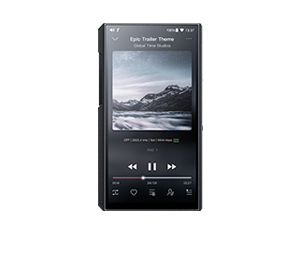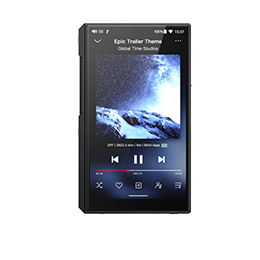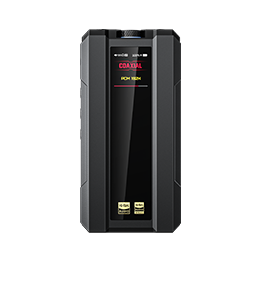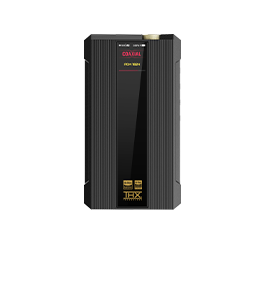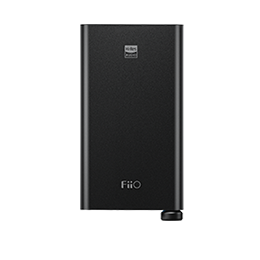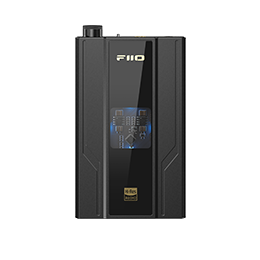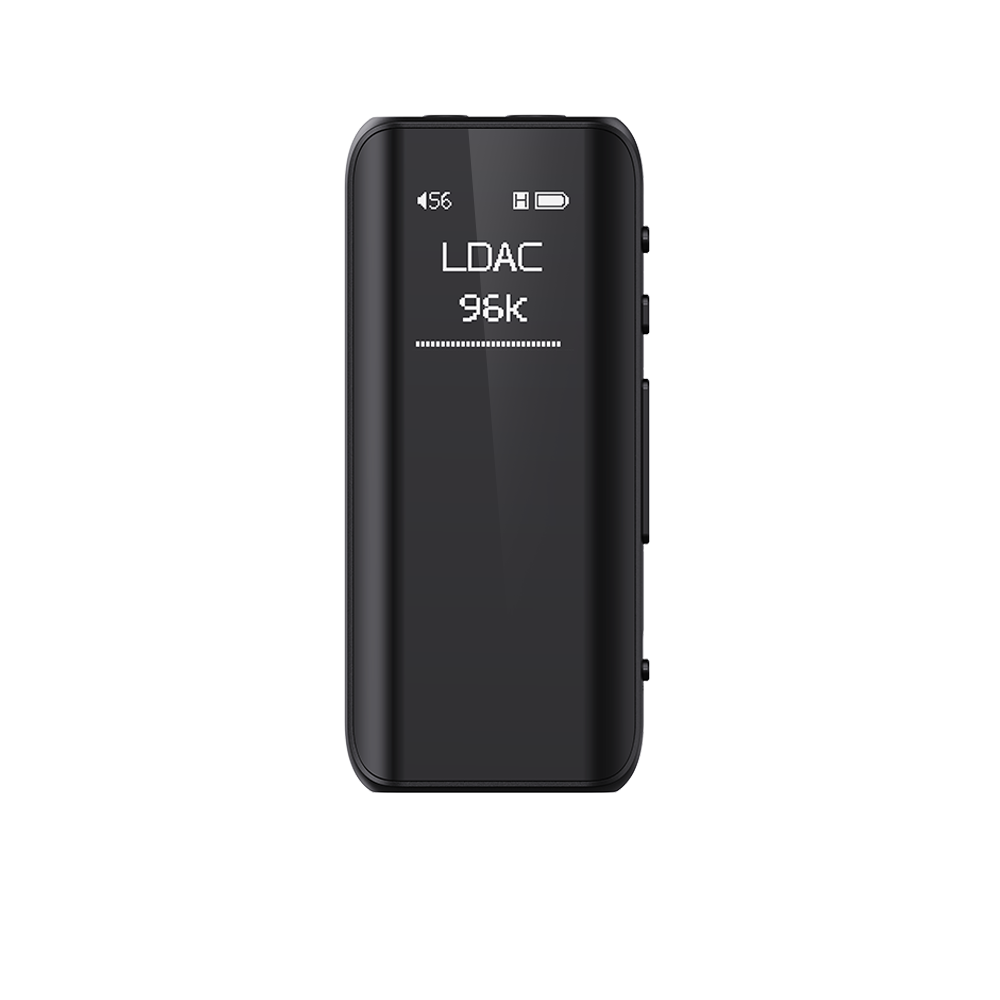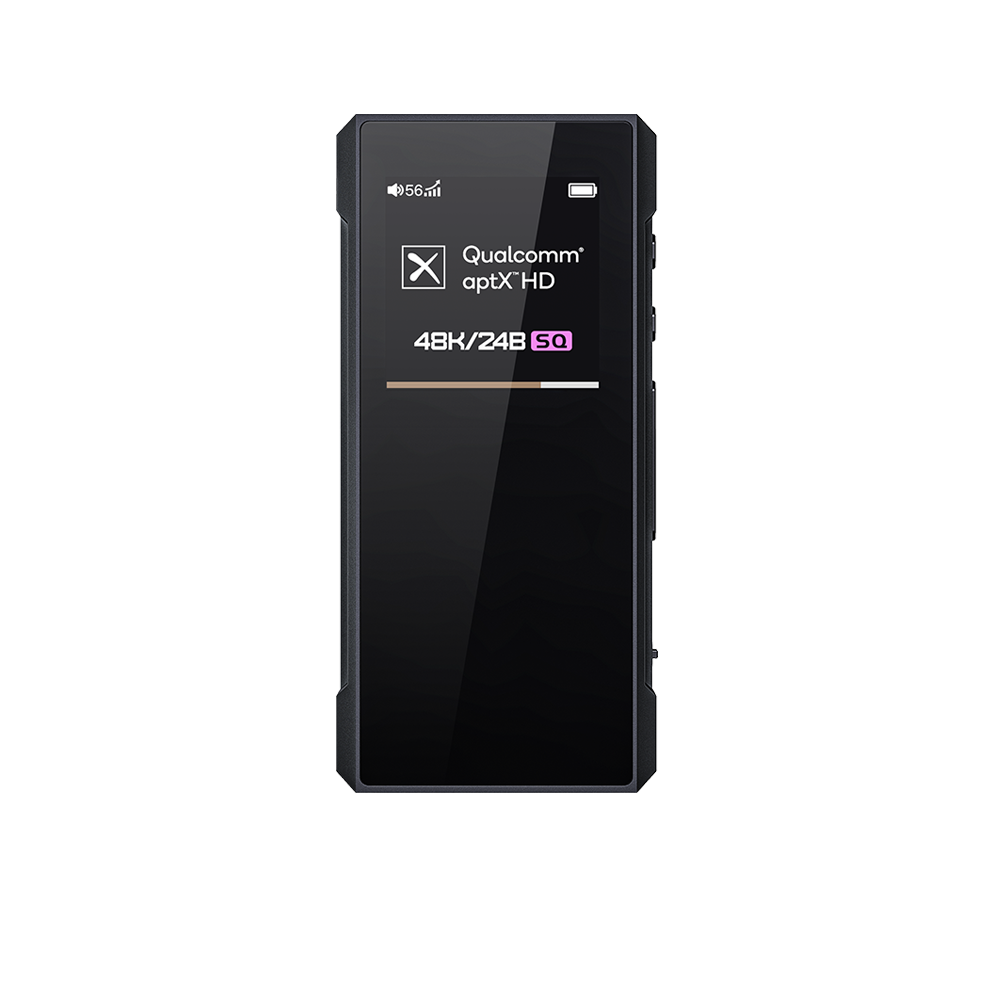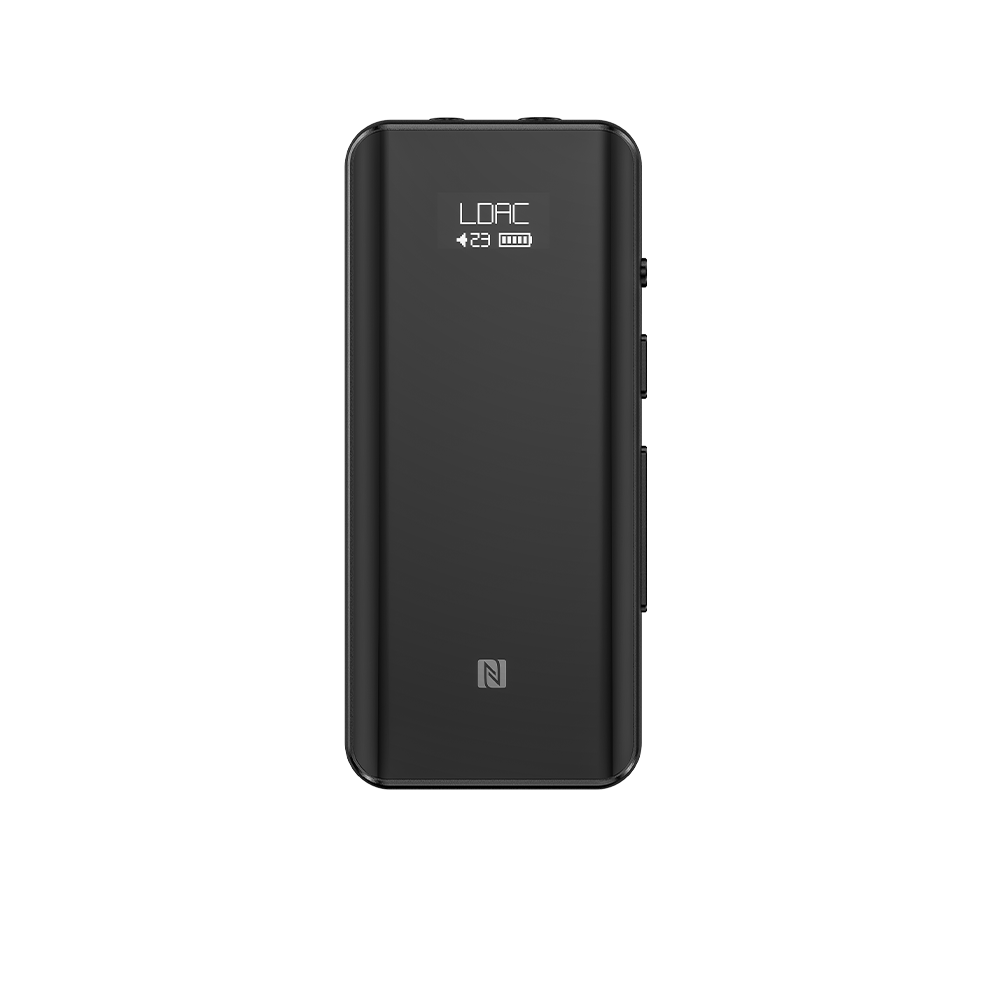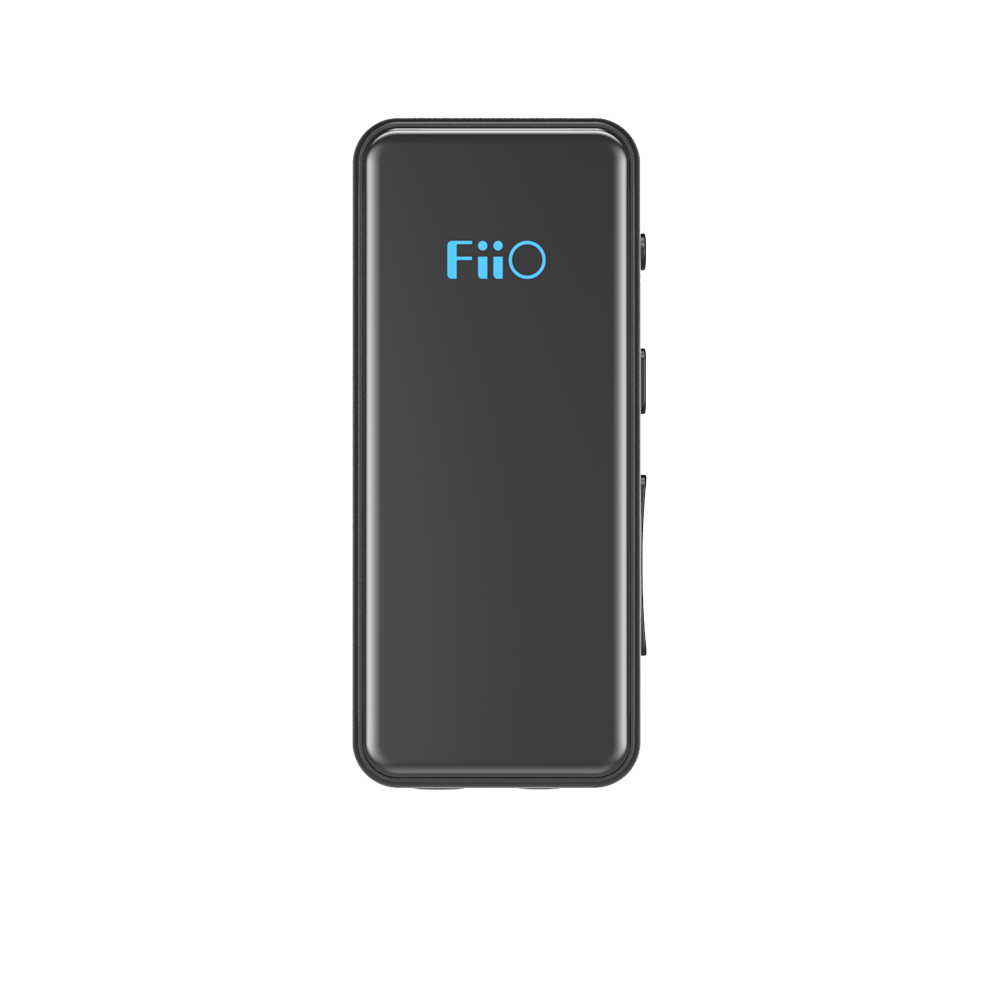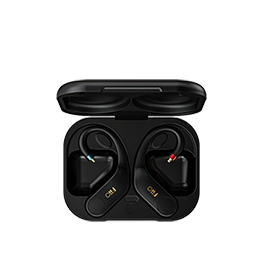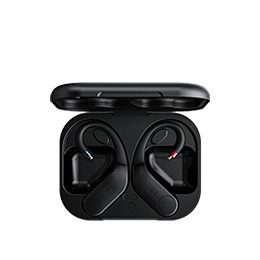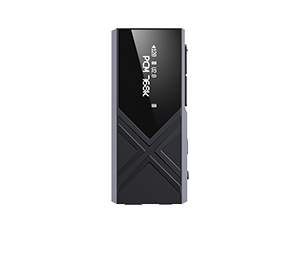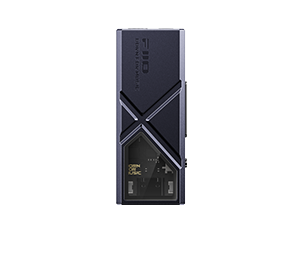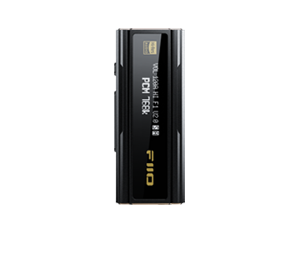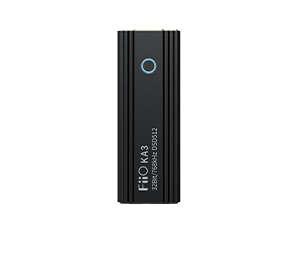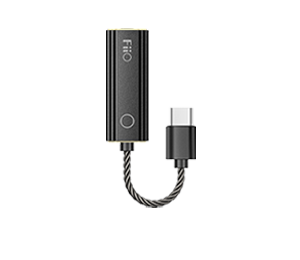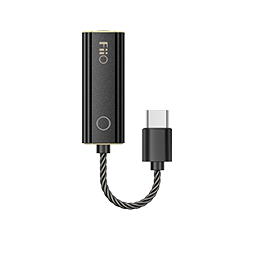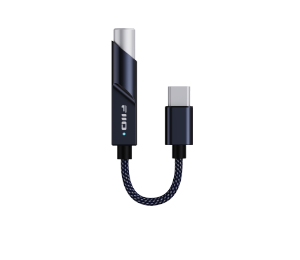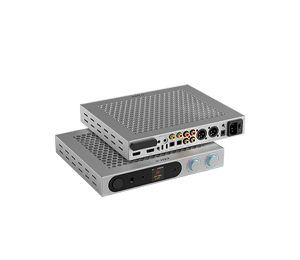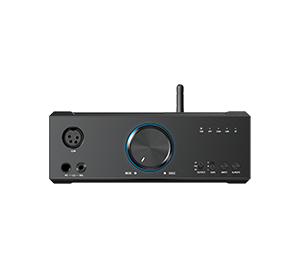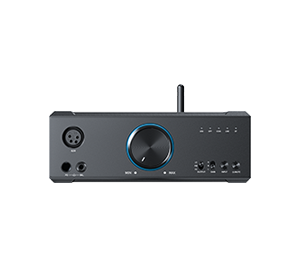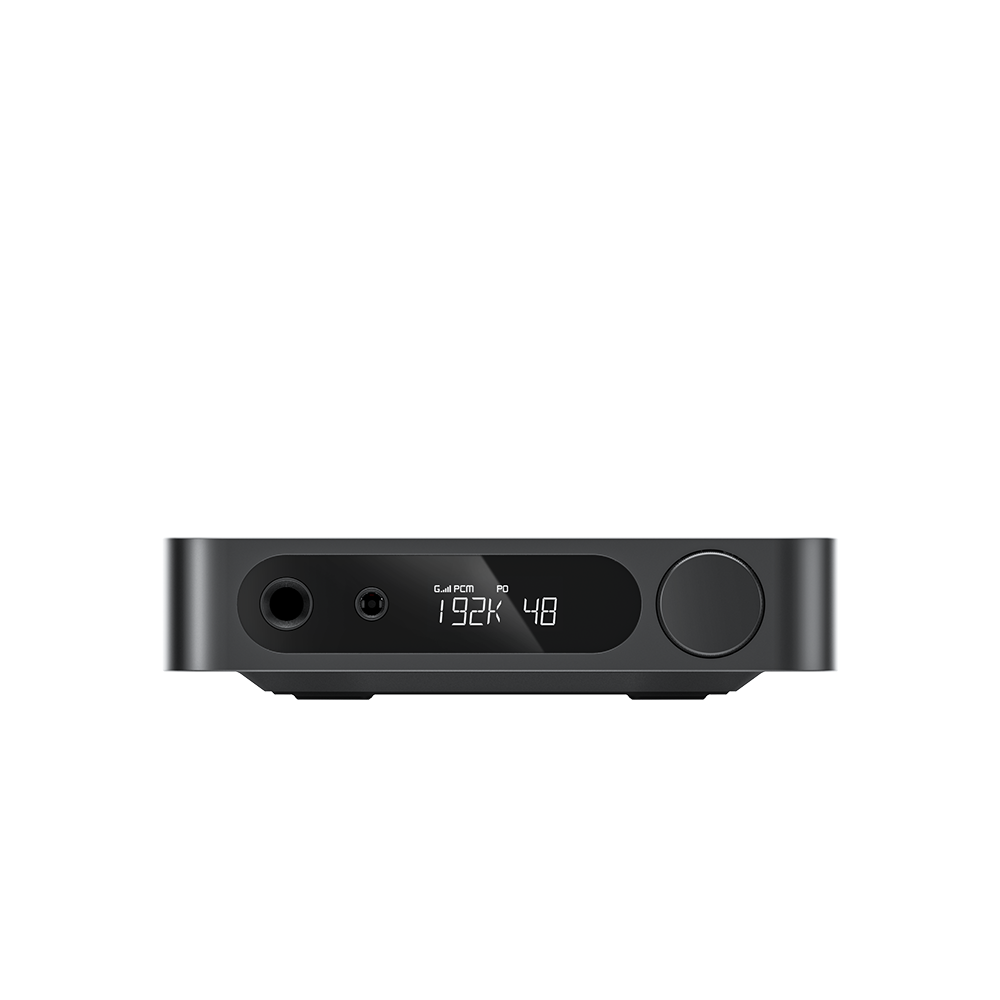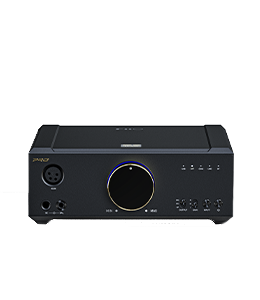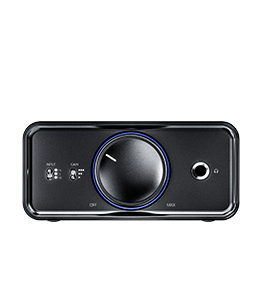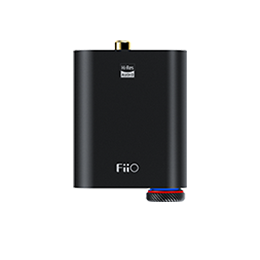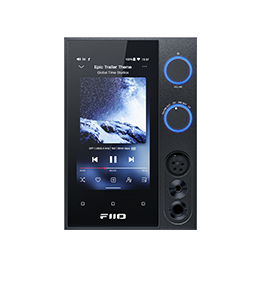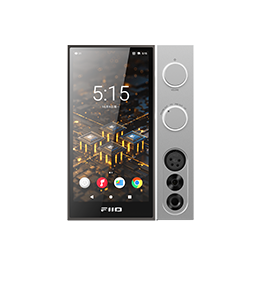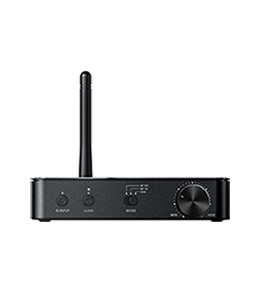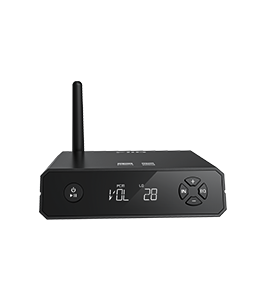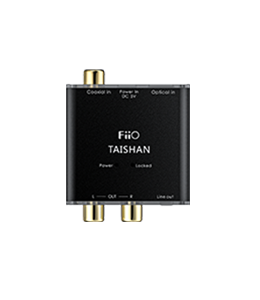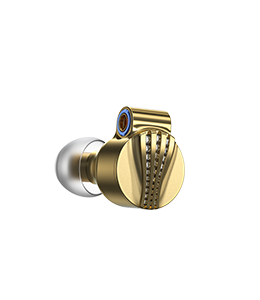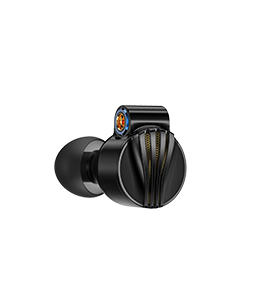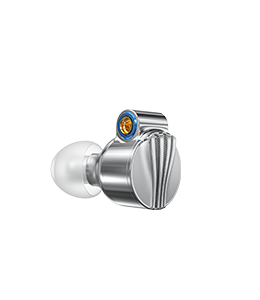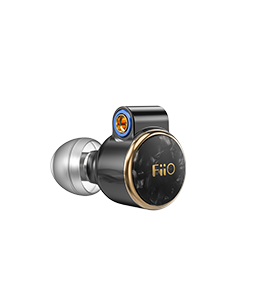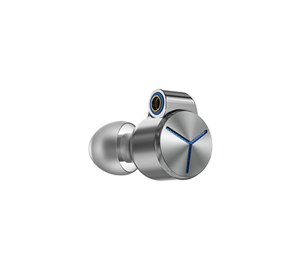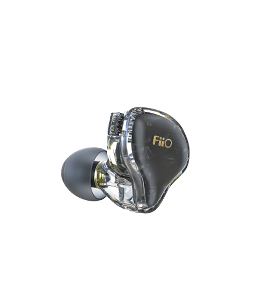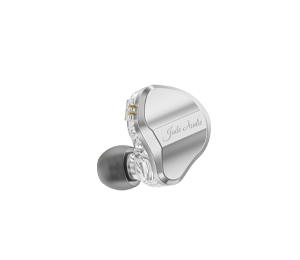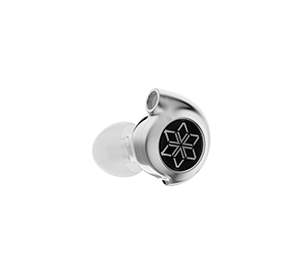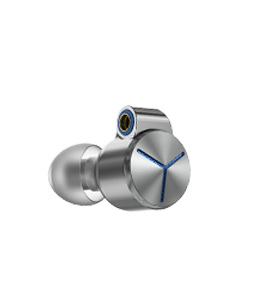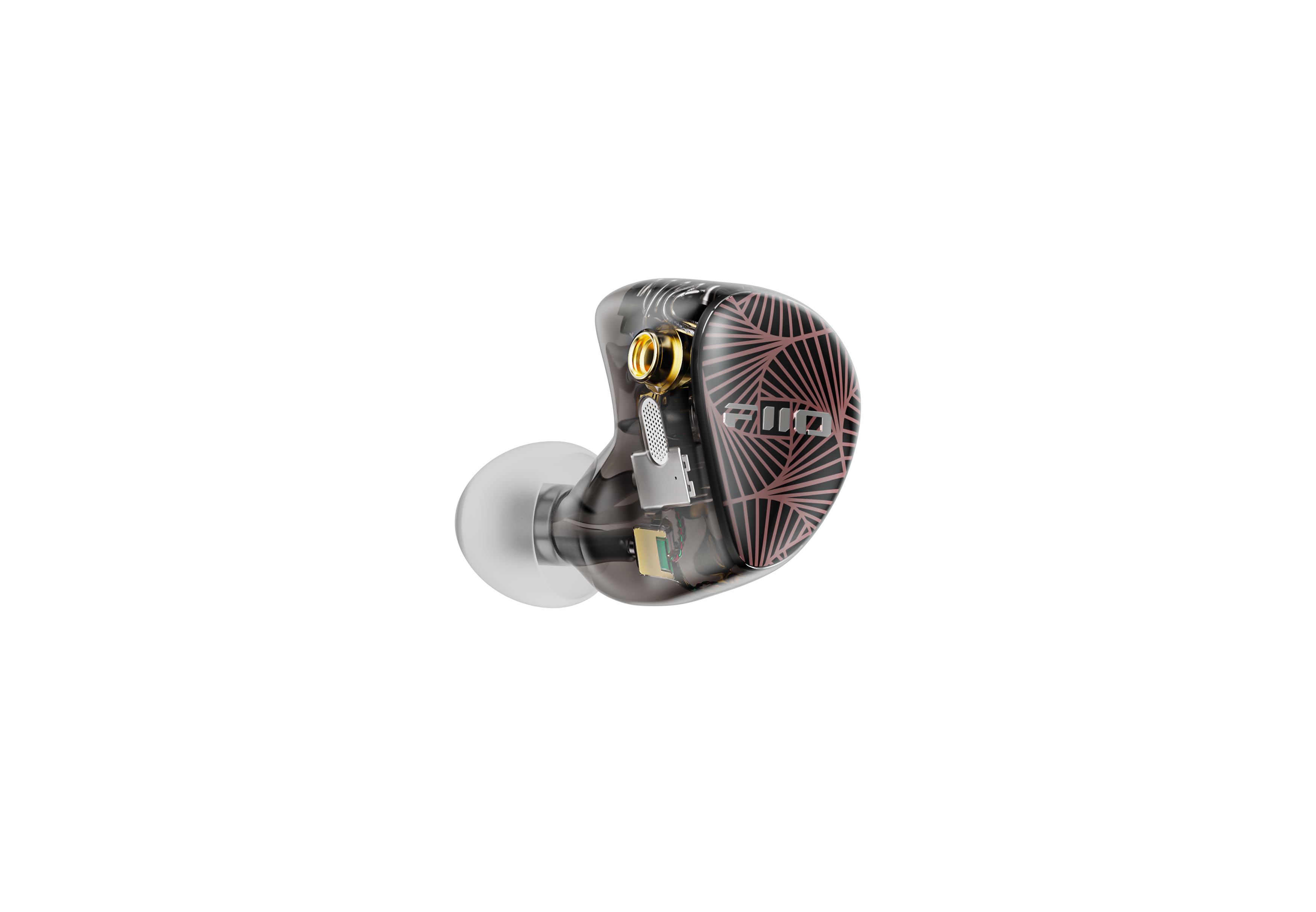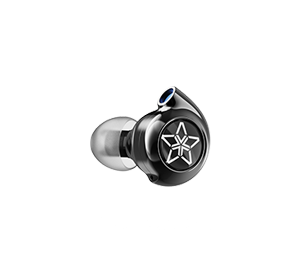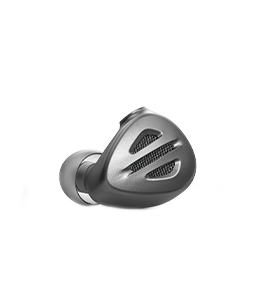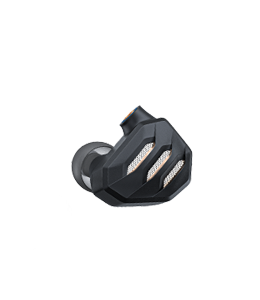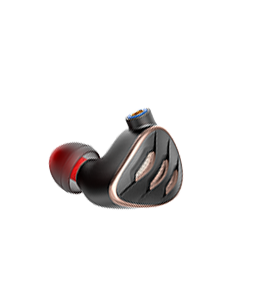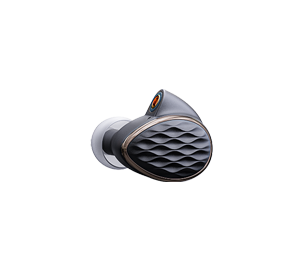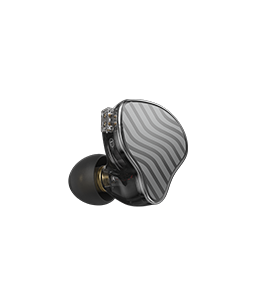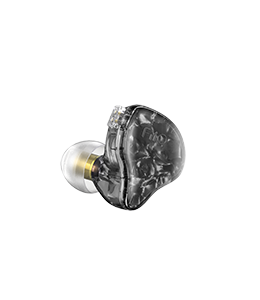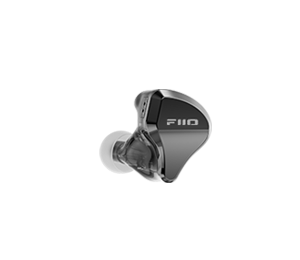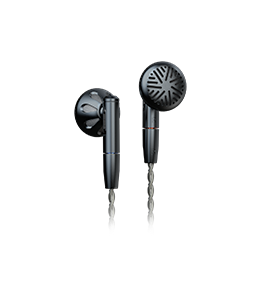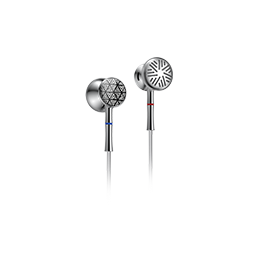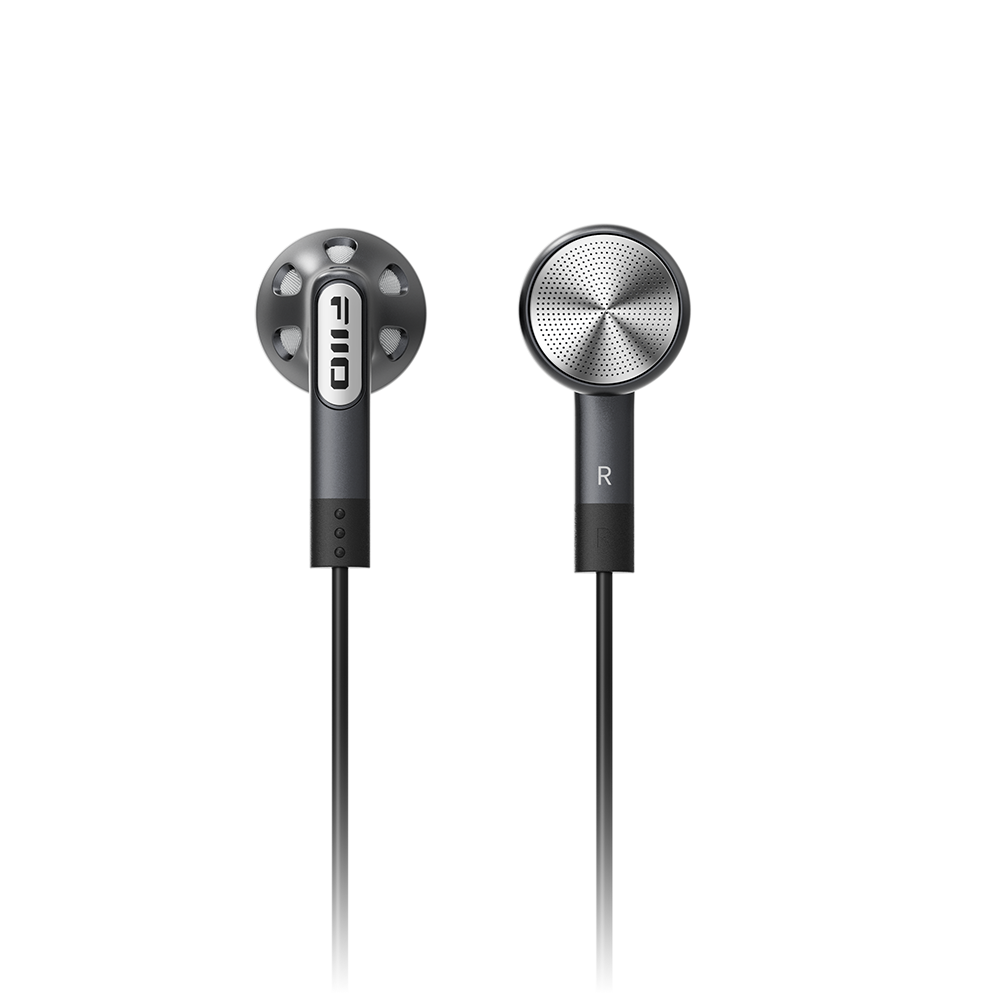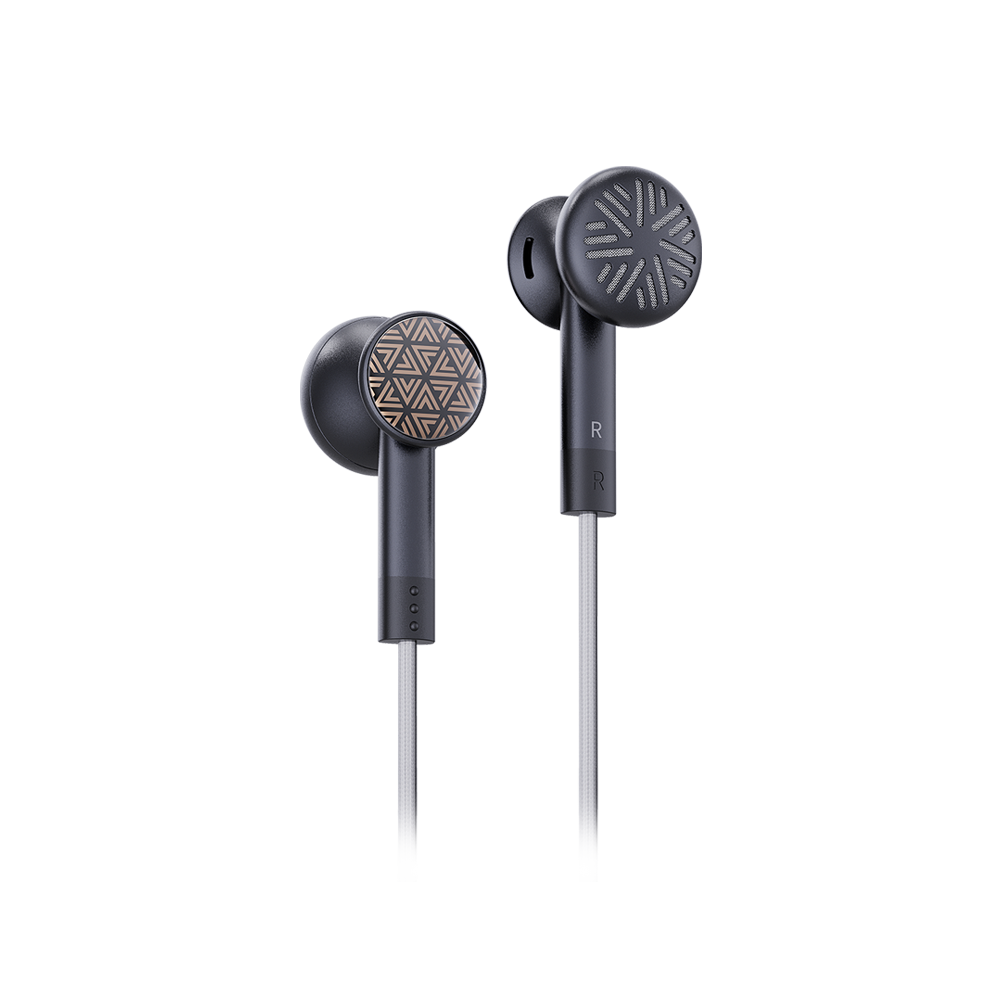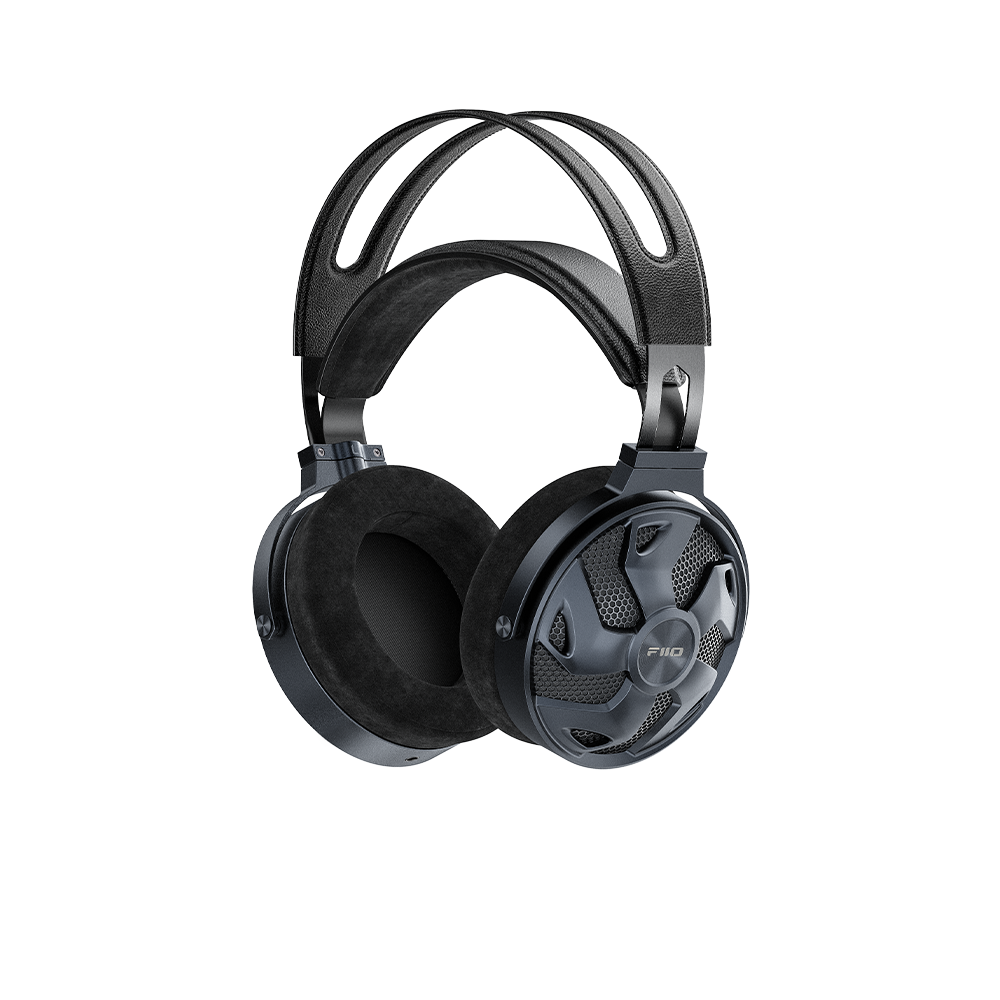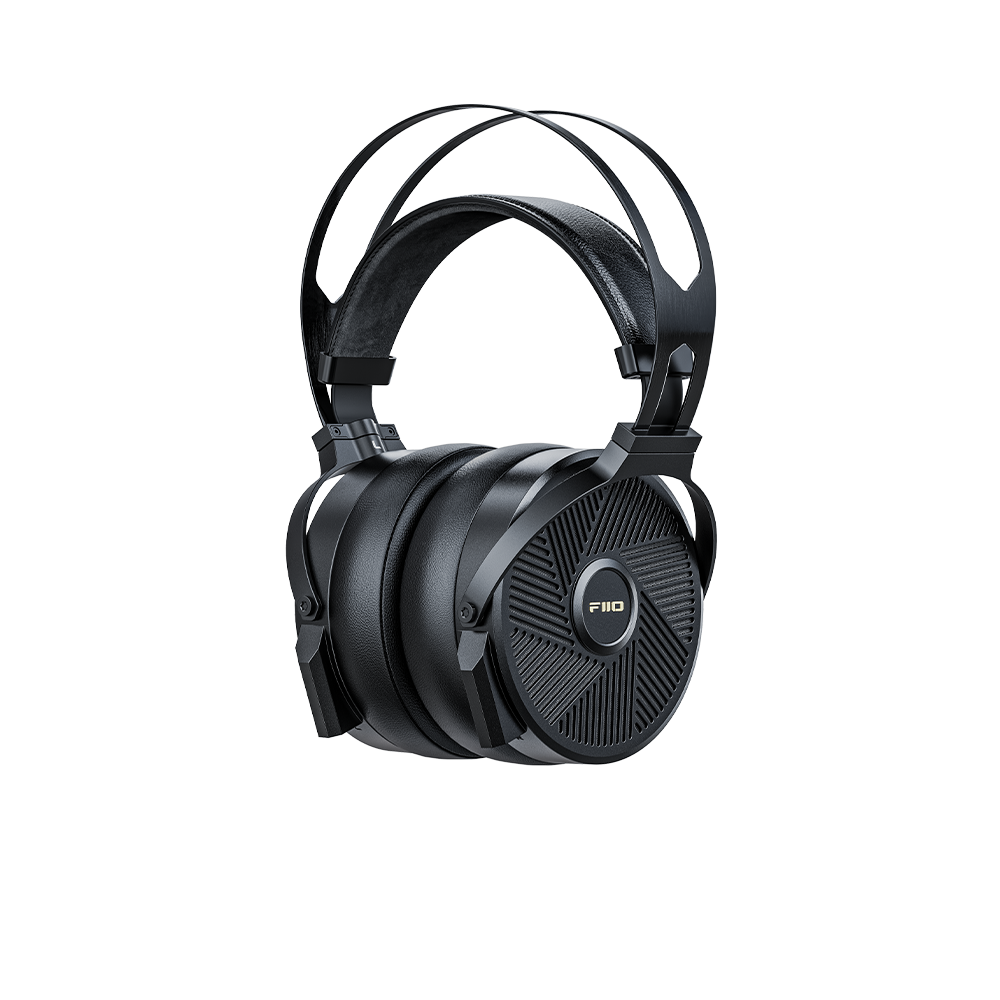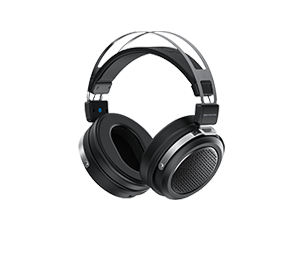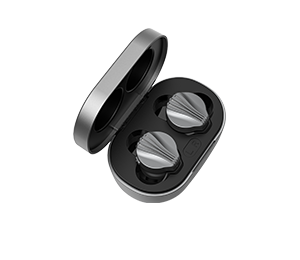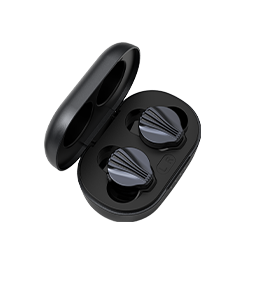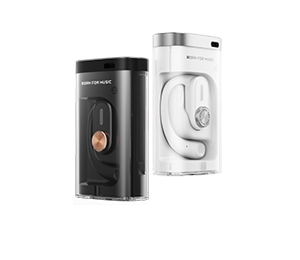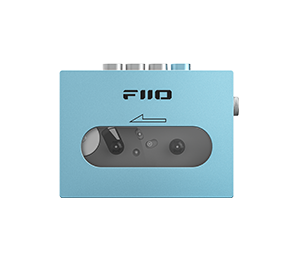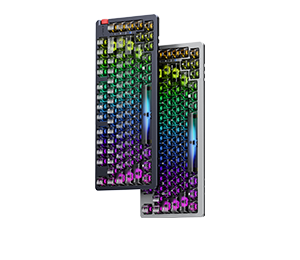FiiO Q5 – Flagship Blue-tooth DAC/amp – a Game Changer
Author:PAUL BROOKS
Review from:Headphone&Earphone.Reviews
→→ Read the original article on Headphone&Earphone.Reviews:>> Click here
INTRODUCTION
FiiO first started their line-up over 10 years ago now, and it was with some very entry level amps and DAC/amps. My very first FiiO device was the E7, and paired with an iPod Touch, I thought I had a pretty decent rig. How times change in a pretty small time period. Nowadays a lot of people are streaming audio, Bluetooth is a requirement (rather than a feature), and a lot more people are paying some reasonably serious coin for high quality headphones, and looking for portable solutions to power them.
If someone had suggested to me 10 years ago that I’d be sitting today with a pair of HD800S, and what’s more, powering them balanced from a high quality DAC/amp paired to my smart-phone, I’d have had a hard time believing it. Yet I sit doing the final edit on this review, and that’s what I’m doing, and I’m enjoying it immensely. So pull up a comfy chair, and allow me to introduce you to FiiO’s Q5 (current flagship DAC/amp).
ABOUT FIIO
FiiO was first founded in 2007. Their first offerings were some extremely low cost portable amplifiers – which were sometimes critiqued by some seasoned audio enthusiasts as being low budget “toys”. But FiiO has spent a lot of time with their on-line communities, and continued to listen to their potential buyers, adopt their ideas, and grow their product range. They debuted their first DAP (the X3) in 2013, and despite some early hiccups with developing the UI, have worked with their customer base to continually develop the firmware for a better user experience. The X3 was followed by the X5, X1, X7 and most of these DAPs are now into their 2nd or even 3rd generations.
They’ve also developed new cables, desktop and portable amplifiers, DACs, ear-buds and earphones. FiiO’s products have followed a very simple formula since 2007 – affordable, stylish, well built, functional, measuring well, and most importantly sounding good.
DISCLAIMER
The Q5 DAC/amp that I’m reviewing today was provided to me freely as a review sample. FiiO have asked me to keep it for my personal use, or for follow up comparisons, and I thank them for this. The retail price at time of review is ~ USD 370. If FiiO would allow me to actually pay for the sample, I would be.
PREAMBLE
If you haven’t read any of my reviews, I suggest starting here, as it will give you an insight into my known preferences and bias.
For the purposes of this review – I used the FiiO Q5 primarily with my iPhone SE, X7ii, X5iii, and as a DAC/amp with my PC, but also with a lot of other DAPs just to check compatibility. I tested with a selection of different earphones (both IEMs and full sized), and primarily used the included AM3A amp module, but also FiiO’s AM5 high powered single ended amp module. Unfortunately the AM3B amp module is not quite here yet – but I’ll cover that in a later comparative review of all of their amplifier modules.
In the time I have spent with the Q5, I have noticed no change to the overall sonic presentation (burn-in). This is a purely subjective review – my gear, my ears, and my experience. Please take it all with a grain of salt – especially if it does not match your own experience.
THE PACKAGE
The Q5 arrived in a 110 x 165 x 52mm retail outer box (over internal box and lid). It is white and black with a picture of the Q5 on the front. Opening the box reveals an inner box with foam insert which holds the Q5, and underneath this an envelope with the other accessories. The total accessory package with my unit included:
1 x USB mini to micro charging cable
1 x lightning to micro USB cable
1 x 3.5 – 3.5 mm cable
1 x 3.5mm to coax adaptor
1 x optical adaptor
1 x screwdriver (for changing the modules)
1 x non-slip silicone pad (for stacking)
2 x long and 2 x short rubber stacking straps
1 x carrying pouch (soft mesh)
1 warranty card
1 operational manual
1 quick start operation card
THE TECHNICAL SPECIFICATIONS
| Model | FiiO Q5 (with AM3A amp module) |
| Approx Price | ~ USD 370.00 |
| Device Type | HQ Blue-tooth DAC and Amp |
| Dimensions | 124 x 64 x 16mm |
| Weight | 195g |
| DAC Chipset | AK4490EN x 2 |
| USB Chipset | XMOS XU208 |
| Bluetooth | CSR8670 |
| Low Pass Frequency Chipset | OPA1642 x 2 |
| Volume IC | NJW1195 |
| OP + Amp | AD8620 + OPA926 |
| Output Power 16 ohm SE / BAL | 230mW SE / 470mW Bal. (THD+N <1%) |
| Output Power 32 ohm SE / BAL | 160mW SE / 440mW Bal. (THD+N <1%) |
| Output Power 300 ohm SE / BAL | 24mW SE / 93mW Bal. (THD+N <1%) |
| SNR | >115dB (A-weighted) |
| THD+N | <0.001% (1 kHz/32ohm) |
| Peak Output Voltage SE / BAL | >6 Vp-p SE / >10.5 Vp-p Bal. |
| Max Current Output | 150 mA |
| Crosstalk | >73 dB SE / >97 dB Line-out / 99 dB Bal. |
| Output Impedance (32 ohm loaded) | <1.4 ohm SE, <2 ohm Bal. |
| Battery Capacity | 3800 mAh |
| Battery Performance / Recharge | 10 hours use, 3.5 hours recharge |
| Blue-tooth Support | aptX, AAC, SBC |
| Sample Rate Support – Up To: | 384/32 USB / 192/24 Coax / 96/24 Optical |
| DSD Support (USB In) | DSD64 / 128 / 256 |
MEASUREMENTS
FiiO has a selection of graphs on their website, and they show a nicely flat response from 20 Hz to 20 kHz (under 32 ohm load), and well less than 0.5dB down at both ends of the frequency spectrum.
I’ve never had much luck measuring DACs with my equipment – its just not good enough to measure what I’d need to for the purposes of an objective review. But I can measure the amp section (using line-in and headphone-out) on loopback, and also measure both the gain and bass boost functionality. The graphs are shown below – and I’ll refer to them later when talking about the gain and boost features.
BUILD
External
 The Q5 outer body is a real work of art, and shows how far FiiO have come in the last few years with design. The body appears to be two piece, with the main part of the shell starting out as a single piece of alluminium alloy, which is then CNC’d and surfaced. The sides, top and amp module are all sand-blasted and the finish matches perfectly. The main face has a polished fine single grain (North/South), and the rear is covered with a polyurethane leather which looks to be both hard wearing, and will give protection – both with the Q5 lying on a table or desktop, and also if paired with a smartphone or DAP.
The Q5 outer body is a real work of art, and shows how far FiiO have come in the last few years with design. The body appears to be two piece, with the main part of the shell starting out as a single piece of alluminium alloy, which is then CNC’d and surfaced. The sides, top and amp module are all sand-blasted and the finish matches perfectly. The main face has a polished fine single grain (North/South), and the rear is covered with a polyurethane leather which looks to be both hard wearing, and will give protection – both with the Q5 lying on a table or desktop, and also if paired with a smartphone or DAP.
Measuring 124 x 64 x 16mm and weighing 195g, the Q5 feels very solid in the hand, and also has a lot of heft. It’s about the same length as my iPhone SE, fractionally wider, almost twice as deep, and considerably heavier. The two pair quite well as a stack, but the overall size is not for the faint-hearted. If paired with the X7, the Q5 is virtually the same physical dimension and weight (the X7ii is marginally heavier).
 The front face is unadorned except for the high-res sticker, and an LED above the amp module which displays the input in use, or if the unit is charging. At the top of the unit are the line-out and coaxial/optical input sockets, and beside them the gain and bass boost switches. At the bottom is the amp module, and FiiO now has a large selection of options including the AM1, AM2, AM2A, AM3, AM3A, AM3B and AM5 modules. One of my next projects will be a full side-by side comparison and review of all of the modules. With the included AM3A module you get a standard 3.5mm stereo socket at the left, USB port in the centre and and 2.5mm balanced socket to the right.
The front face is unadorned except for the high-res sticker, and an LED above the amp module which displays the input in use, or if the unit is charging. At the top of the unit are the line-out and coaxial/optical input sockets, and beside them the gain and bass boost switches. At the bottom is the amp module, and FiiO now has a large selection of options including the AM1, AM2, AM2A, AM3, AM3A, AM3B and AM5 modules. One of my next projects will be a full side-by side comparison and review of all of the modules. With the included AM3A module you get a standard 3.5mm stereo socket at the left, USB port in the centre and and 2.5mm balanced socket to the right.
 On the right hand side is the extremely responsive and slightly recessed ADC volume pot. The action is very smooth while still being quite firm, and the knurling on the knob makes it ideal for finger or thumb adjustment. The pot is also very quiet, and there are no signs of imbalance even with sensitive IEMs at low volume. Below the pot is on/off switch with a blue LED light in its centre which glows when the unit is switched on. Below this is a green LED which glows if being fed a native DSD signal.
On the right hand side is the extremely responsive and slightly recessed ADC volume pot. The action is very smooth while still being quite firm, and the knurling on the knob makes it ideal for finger or thumb adjustment. The pot is also very quiet, and there are no signs of imbalance even with sensitive IEMs at low volume. Below the pot is on/off switch with a blue LED light in its centre which glows when the unit is switched on. Below this is a green LED which glows if being fed a native DSD signal.
On the left hand side are the blue-tooth controls. The top is a rewind/previous button, the centre is play/pause (and blue-tooth on / pairing), and the bottom is forward/next. The forward/next button also doubles as a switch between coax, optical and line-in (when neither USB or blue-tooth is engaged). Right at the bottom left is another USB port – but this is for charging only, and allows FiiO to isolate the bottom USB port for audio when charging at the same time.
The entire unit has a nice bevel on both sides, and rounded corners top and bottom. This is easily the most sophisticated amp/dac I have seen (in terms of physical design) from FiiO to date, and its overall appearance looks every inch the flagship it is.
Internal
 Internally the Q5 uses dual AK4490EN DAC chips which have exceptional SNR and low distortion. They provide PCM sampling rates up to 32/384 and DSD up to DSD256. The AK4490EN DACs are accompanied by dual TI OPA1642 for the low pass filters and an MSP432 microcontroller to aid with power consumption. The NJW1195 4 channel chip is used for electronic volume control, and FiiO uses premium components such as Panasonic caps to ensure the highest quality audio with no compromise.
Internally the Q5 uses dual AK4490EN DAC chips which have exceptional SNR and low distortion. They provide PCM sampling rates up to 32/384 and DSD up to DSD256. The AK4490EN DACs are accompanied by dual TI OPA1642 for the low pass filters and an MSP432 microcontroller to aid with power consumption. The NJW1195 4 channel chip is used for electronic volume control, and FiiO uses premium components such as Panasonic caps to ensure the highest quality audio with no compromise.
For USB connection the Q5 utilises the XMOS XUF208 micro-controller for reliability and stability (and I can attest that this has been a feature of the Q5 so far in my testing).
The Q5’s power circuit has been designed with seven low-dropout regulators – one each for the DAC, Line-Out, Volume Control, Low Pass Filter, Amplifier, XMOS USB and Bluetooth. The idea behind the use of LDO’s is that by isolating each component’s power supply, FiiO can deliver both cleaner power, and also better audio.
The Bluetooth chip is Qualcomms CSR8670 which supports aptX, AAC,SBC, and employs the 4.2 Bluetooth standard. One of the things which really interested me with the Q5 is that it doesn’t use the CSR8670’s on-chip DAC for audio decoding – it only uses the CSR8670 for transmission. Actual audio decoding is performed by the AK4490EN DACs, and this is why Bluetooth on the Q5 sounds to me very bit as good as via USB, or COAX/optical.
Inputs / Outputs
FiiO have really given us the whole kitchen sink as far as inputs go, and included are USB, COAX, Optical, Bluetooth, and Analog Line-In. I’ve been able to check all of the available inputs, and so far they have worked flawlessly. With my iPhone SE, I simply used aac256 for starters, and then transferred a DSD album via the FiiO app, and via USB it successfully natively played (the DSD LED lit up).
DOCKING & USE AS A DAC
I’ll start with the bit that amazed me. With any new DAC, my first step is to plug into into my work laptop (64bit Surface Pro running Win10). I have some music on the lap-top, but our Company locks down the OS so we can’t install anything like programmes or DAC drivers. Within seconds I got a pop-up saying the DAC was recognised, and shortly thereafter the Q5 appeared, and I was able to play music from the lap-top. Checking the available bit and sample rates confirmed resolution (via USB) up to 32/384. Two thumbs up FiiO.
Next onto my home PC. This one already has the X7ii universal driver set installed, so the Q5 was instantly recognised, and I soon had Foobar2000 running and the Q5 playing native DSD. I quickly ran through my test suite of formats and it does indeed play everything I threw at at it. Booting out of Windows, my next step was to connect to my main OS (Debian Linux). Again the Q5 was recognised. I ran my purchased installation of Jriver Media Centre for Linux, and played some native DSD. Again – easy recognition, and again the test suite of formats ran easily. Next step was using the K5 (essentially isolating the DAC and using the K5’s amp via the dock). Again connection was simple, and again I had no problem playing any format.
So lets move to Android (using the FiiO X7ii, X5iii and my wife’s Galaxy). Connection was very straight forward and using Neutron or FiiO Music I had no issues connecting and playing any file. Finally my iOS devices(my iPhone SE and iPad mini). Once again no issues with either, and using the FiiO music app, I can successfully play hi-res including DSD. I can honestly say not a single hitch. This is ease of use the way its meant to be. Well done FiiO – really well done.
BLUETOOTH
This is usually an interesting one with FiiO. Past experience with other devices has shown me that while their Bluetooth generally works, its not always the most stable, and doesn’t always have the longest range. Pairing was easy, and having the side controls for playback makes it a really handy device if you’re playing from a lap-top. With the i-devices again no problem pairing and the connection was really solid as long as you’re in a range of about 3-5m. There was also no problem with having my phone in one pocket and Q5 in the other. Out beyond about 5-6m the connection is strong out to about 10m (if you are within line of site), but going through obstacles cuts this down dramatically. All in all though the Bluetooth performance is good and I often use it for walking and especially around the house.
The Q5 supports SBC, AAC and aptX codecs, and they have said that upgrades can be pushed out electronically over USB. Nice! Perhaps the best thing about FiiO’s implementation of Bluetooth is that its not using the DAC included in the Bluetooth SoC. Instead its sending the signal to the AK4490EN DACs. This is indeed Bluetooth with extremely good quality. I personally couldn’t tell the difference in sound quality from a wired connection.
BATTERY LIFE
FiiO advertises approximately 10 hours life for DAC/amp use paired with a source via USB or COAX (eg DAP or Smartphone), and charging time of around 3.5 hours. I’ve found this pretty accurate and even using the higher powered balanced connection has still get me through a day. If you are using the Q5 as an amp only (ie line-out), then that battery time almost doubles at close to 20 hours. With a 5V 2.1a charger, full charge was indeed easily achieved in well under 4 hours.
POWER / NOISE / HEAT
 The power output on the Q5 is determined by the amp module you pair with it, and for now I’ll stick with real world tests of the AM3A amplifier module. FiiO recommends up to 150 ohm headphones for the SE output and this makes sense given the relatively weaker output of 24 mW into 300 ohms. With easier to drive full sized headphones (HD630VB and MS Pro), there were no issues. Even the HD600 sounded pretty good – although on my full sized amps (volume matched comparisons) there did seem to be subjectively a little more bass output where the Q5 was slightly anaemic. But that would be picking at straws though. The HD600 sounds pretty good out of the SE port – even with only 24 mW output.
The power output on the Q5 is determined by the amp module you pair with it, and for now I’ll stick with real world tests of the AM3A amplifier module. FiiO recommends up to 150 ohm headphones for the SE output and this makes sense given the relatively weaker output of 24 mW into 300 ohms. With easier to drive full sized headphones (HD630VB and MS Pro), there were no issues. Even the HD600 sounded pretty good – although on my full sized amps (volume matched comparisons) there did seem to be subjectively a little more bass output where the Q5 was slightly anaemic. But that would be picking at straws though. The HD600 sounds pretty good out of the SE port – even with only 24 mW output.
Ramping things up with the Balanced port, and the much higher voltage and overall power output (93 mW into 300 ohms) is immediately noticed – particularly with the HD800S. It has become my favourite portable combination for around the house – iPhone SE, Q5 and HD800S. So much so that a lot of my time is now spent with this combo rather than at my desktop.
Switching to IEMs, and I started with one of my current “regulars” for personal listening – the LZ Big Dipper (25 ohm, 115 dB/mW sensitivity). The Q5 handled the Dippers easily for power, and its relatively low SE output impedance was great with this multi-driver IEM which can be sensitive to higher impedance devices. Next was the HifiMan RE2000 (60 ohm and 103 dB/mW). This definitely needed a slight adjustment up on the pot, but just a minor tweak. My final test was with something that amazed the heck out of me. VE sent me their new Zen Lite 300 ohm balanced earbuds, and first time I used them with the Q5 I knew that it was am incredible match. Firstly – the Q5 drives them beautifully, and second – the Zen Lite is the closest I’ve come to wearing full sized decent open headphones …. except they’re earbuds. Just beautiful – especially with acoustic music. I use this combo all the time at work now.
So lets finish this section with comments on noise and heat. Firstly – I find it hard to hear any hiss most of the time – simply because my permanent tinnitus masks it. So I enlisted the help of my daughter and we tested with the DN2000J and she only detected hiss with the volume cranked right up (ie outside the realms of normal listening conditions).
As far as heat goes, the Q5 has only been very slightly warm during a long listening session, but generally I’ve found the ambient heat dissipation to be excelelnt. So good in fact that I wouldn’t even call it lukewarm.
GAIN / BOOST
As shown in the measurement section, I measured the amp section only to get an idea of the effect of applying high gain and also bass boost. The gain control is pretty simple – just adding 6 dB of volume (tested both via loop-back, and with a dB meter driving a 300 ohm load – the HD600). Its also very linear, and because the internals are so quiet, I still can’t hear any increase in the noise floor.
The bass boost is very much centred on sub-bass, and involves a slight (but relatively linear) dip from 2-20 kHz (slightly less than 1 dB), and a rise of 4dB which is centred between 20-100 Hz. The result is a decent increase in sub-bass warmth, and I actually find it pretty good for a headphone like the HD800S if I want a little extra slam or bottom end emphasis. The other headphones it was particularly good with was my MS Pros.
THE FIIO MUSIC APP – TWEAKING THE Q5
 Before we get to the sound, I wanted to briefly mention the Q5’s synergy with the FiiO Music app – available via iTunes. The settings menu gives access (and this is via Bluetooth) to some hidden features on the Q5 – such as:
Before we get to the sound, I wanted to briefly mention the Q5’s synergy with the FiiO Music app – available via iTunes. The settings menu gives access (and this is via Bluetooth) to some hidden features on the Q5 – such as:
Switching the two USB port designations from charge to data and vice-versa (nice if you have a smartphone with a side USB port!)
Changing the LPF – 5 options. Personally I can’t hear a difference but there will be some who may like this option.
Adjusting channel balanced
Adjusting auto power off settings
Turning off the LED
Its a really cool little feature, and just one more sign that FiiO were really pushing the envelope in designing the Q5
SOUND
Preface
I’m going to preface this section with a little critique I received a while ago, and my answer to it – so that you can understand why I don’t comment on some things, and why I do comment on others. I was told my review on another amp was poor because I didn’t include sections on bass, mid-range, treble, sound-stage, imaging etc – yet referred to an amp as warm, full, or lean.
Now I can understand the reference to warm / full / lean – as they are very subjective terms, and whilst I’d like to avoid their use, they are invaluable to convey true meaning. Comparing my NFB-12 to the Aune X1S for example – the Audio-gd does sound richer and warmer. It’s the nature of the DAC and amp which is used.
But I choose not to comment on bass, mids, treble, and most definitely not sound-stage – simply because when we are talking about a DAC/amp – IMO they shouldn’t be discussed. An DACs job is to decode the signal in as linear fashion as possible, and the amp’s job is to amplify the signal with as low distortion as possible. If the device is doing its job properly, there is no effect on bass, mids, or treble – except if hardware boost is concerned. And IME an amp does not affect sound-stage (unless there is DSP or cross-feed in play) – that is solely the realm of the transducers and the actual recording.
So we have that out of the way how does the Q5 perform sonically?
Tonality
To test tonality, I usually compare (using same source/transport) with my E17K. The FiiO E17K is one of the most linear devices I own, and is essentially ruler flat from 20Hz to 20kHz. Both devices were volume matched and had my iPhone SE as source. For headphones – I used the HD630VB – mainly because the E17K may have struggled a little with the HD800S.
In subjective comparison, the Q5 is subtly different, but at the same time very similar. Both have a very neutral signature with no obvious additional tonal warmth. Where they differ slightly is in vibrancy. The E17K is slightly edgier, more vibrant, and just a touch brighter. In comparison, the Q5 is smoother, and more natural sounding.
Transparency
While I mentioned smoothness, and neutrality as well as naturalness, the one thing the Q5 does not lose is overall transparency. I think this is helped by the very clean background (which in itself aids a feeling of depth or space if its in the recording). All the micro details are present, and transient notes are very clean and clear – this is particularly noticeable with the HD800S. Micro details are not smoothed, nor (as I read from another review) is anything “stuffy or hazy”.
COMPARISONS
Always a difficult topic, and especially when you have a device which has so many uses. So I thought I’d approach this from two different areas. Firstly with the Q5 as a desktop device comparing it to my daily workhorse – the truly magnificent iFi iDSD, and also to the IMS Hybrid Valve desktop DAC/amp.
Secondly we’ll look at the Q5 as a mobile device, and directly compare my iPhone SE + Q5 vs dedicated devices including the Cayin N5ii, the FiiO X5iii and X7ii, and finally the iPhone SE paired with one of the best sounding portable amps I own – the XRK NHB portable class A amp.
I used the devices with my HD800S (if testing balanced), and my HD630VB for single ended. With each test – the same files were used, volume was set and matched with test tones and a calibrated SPL meter. Listening was at my average normal level of 70-75 dB. I’ve also tried a different format so that information can be gleaned more quickly. Please remember that these comparisons are completely subjective and simply biased view on the differences.
As a desktop device
FiiO Q5 vs iFi iDSD
| Feature/Attribute | FiiO Q5 vs Ifi iDSD (original) |
| Price | $369 vs $340 |
| Size / Footprint | Q5 is smaller, but issues with stability (too easy to move on desk). iFi iDSD is larger – but more stable on desktop (still a small footprint) |
| Input Power | Both via USB + battery option (~10 hrs) |
| As DAC (USB) | Both Q5 and iDSD are driver-less under Linux / iOS. Q5 can use generic Win driver but dedicated driver provides DSD and full functionality. iDSD requires dedicated Win driver. |
| Input support | Both have USB, COAX, optical, and Line-In. Q5 also has Bluetooth. |
| Power Output | Q5 with AM3A (default) has sufficient power in balanced mode to drive the HD800S or similar. SE more suitable to portable / IEMs. iDSD has excellent power output and management via gain. Will power most full sized headphones or IEMs. |
| Tonality / Sound | The Q5 is a little brighter and leaner than iDSD but still has a smooth tonality. The iDSD sounds a little richer and has more fullness in body |
| Transparency | Both are excellent and easily handle micro-details. |
| Personal preference | The Q5 would be magnificent if paired with K5 as long as K5 had better support for speakers (ability to control with pot). Very good for laptops (portability) – but not my #1 choice for desktop. As a pure desktop device, the iDSD still reigns (combination of footprint, power, flexibility with gain settings, and versatility with formats. |
FiiO Q5 vs iFi iDSD
| Feature/Attribute | FiiO Q5 vs IMS Xi-9 Hybrid Valve Desktop |
| Price | $369 vs $560 |
| Size / Footprint | Q5 is smaller, but has issues with stability (too easy to move on desk). Xi-9 is larger – but more stable on desktop (still a relatively small footprint) |
| Input Power | Q5 is via USB + battery option (~10 hrs). X1-9 is via powered wall-wart. No battery option |
| As DAC (USB) | Both Q5 and Xi-9 are driver-less under Linux / iOS. Q5 can use generic Win driver but dedicated driver provides DSD and full functionality. Xi-9 requires dedicated Win driver. |
| Input support | Q5 has USB, COAX, optical Blue-tooth, and Line-In. Xi-0 has USB, Bluetooth, and Line-In – but also includes separate grounded option for vinyl set-up |
| Power Output | Q5 with AM3A (default) has sufficient power in balanced mode to drive the HD800S or similar. SE more suitable to portable / IEMs. Xi-9 headphone outputs are somewhat limited in power, but able to handle up to HD800S/HD600 (just). Rear RCA outputs can deliver up to 50W per channel, and ideal for even passive speakers. |
| Tonality / Sound | The Q5 is warmer than Xi-9, but only because the Q5 is neutral and smooth vs the Xi-9 being bright / cool. The Xi-9 is quite bright / cool / clear. Pairs exceptionally well with warmer headphones or speakers. Can be too vibrant with brighter transducers. |
| Transparency | Both are excellent and easily handle micro-details. Xi-9 can appear more detailed due to its brighter presentation. |
| Personal preference | This is a hard one to call. Q5 for headphones solely if paired with K5 and definitely Q5 if solely for laptop and headphones. If using for full desk-top (including speakers – either passive or active), then the Xi-9 is a wonderful device but still does not top my iDSD (except for passive speakers – which the iDSD cannot power.) |
As a portable audio solution
For this section I’m assuming everyone carries a smartphone anyway – so haven’t included that in the cost. I’ll also be primarily comparing Bluetooth, and in a truly portable day-to-day situation.
Iphone SE + FiiO Q5 vs Cayin N5ii
| Feature/Attribute | FiiO Q5 (+iPhone SE) vs Cayin N5ii |
| Price | $369 vs $369 |
| Size / Footprint | The Q5 stack is larger and heavier if combining via USB, COAX or optical (also more devices to power and to carry). The N5ii has the advantage of being an all-in-one device with perfect hand sizing |
| Battery life | Both devices have approximately 10 hours continuous use. |
| GUI | The Q5 allows interaction with player of your choice (including FiiO music app for iOS which allows filter changes etc). The N5ii has Hiby as default, but can also use 3rd party apps. N5ii UI overall is a little slower but is feature rich. |
| Storage | Q5 is limited by the input device (iPhone SE). In my case I use AAC256 and can easily fit around 400 full albums (more if I wanted). The N5ii has dual micro SD slots so potentially up to 800 Gb currently – far more than an average smart-phone. |
| Power Output | Q5 with AM3A (default) has sufficient power in balanced mode to drive the HD800S or similar. SE is more suitable to portable / IEMs. N5ii output is almost same on SE (Q5 is marginally higher), but significantly lower than the Q5 with balanced output. |
| Tonality / Sound | The two devices are very close, with the N5ii exhibiting the slightest bit of extra brightness. The Q5 is marginally smoother and more natural sounding. Saying that though, in a blind test I think I’d be struggling to tell the two apart with the Q5 sporting the AM3A. The difference is mainly in leading transients with the N5ii being crisper and slightly more vigorous. |
| Transparency | Both are excellent and easily handle micro-details. |
| Personal preference | The Q5’s strong points are the GUI speed, and for me the tonal balance and natural smoothness of the overall presentation. The N5ii strengths are form factor, storage space and overall sound quality. Clarity of the signal is very good, but my personal preference is for the more natural tone of the Q5. |
Iphone SE + FiiO Q5 vs FiiO X5iii
| Feature/Attribute | FiiO Q5 (+iPhone SE) vs FiiO X5iii |
| Price | $369 vs $339 |
| Size / Footprint | The Q5 stack is larger and heavier if combining via USB, COAX or optical (also more devices to power and to carry). The X5iii has the advantage of being an all-in-one device with perfect hand sizing |
| Battery life | Both devices have approximately 10 hours continuous use. |
| GUI | The Q5 allows interaction with player of your choice (including FiiO music app for iOS which allows filter changes etc). The X5iii has FiiO Pure Music as default, but can also use 3rd party apps. X5iii UI overall is slower but is feature rich. |
| Storage | Q5 is limited by the input device (iPhone SE). In my case I use AAC256 and can easily fit around 400 full albums (more if I wanted). The X5iii has dual micro SD slots so potentially up to 800 Gb currently – far more than an average smart-phone. |
| Power Output | Q5 with AM3A (default) has sufficient power in balanced mode to drive the HD800S or similar. SE is more suitable to portable / IEMs. V5iii’s balanced output cannot do justice to HD800S unless FiiO’s turbo/over-drive is engaged. One of the biggest critique of the X5iii remains with its amplification section comparative to other devices. However, it is still very good with IEMs and headphones with lower power requirements. |
| Tonality / Sound | The two devices are once again quite close, with the X5iii exhibiting a touch of extra warmth. Both have a very smooth presentation overall. The Q5 is subjectively more natural sounding, whilst the X5iii sounds as if it has slightly more body or richness (more coloured). |
| Transparency | Both are excellent and easily handle micro-details. |
| Personal preference | The Q5’s strong points are the GUI speed, and for me the tonal balance and natural smoothness of the overall presentation. The X5iii strengths are form factor, storage space and overall easy listening sound quality. Amplification strength can be an issue with the X5iii but it is still very good with smaller portable transducers. My personal preference is for the more natural tone of the Q5. |
Iphone SE + FiiO Q5 vs FiiO X7ii (both devices with AM3A)
| Feature/Attribute | FiiO Q5 (+iPhone SE) vs FiiO X7ii |
| Price | $369 vs $649 |
| Size / Footprint | The Q5 stack is larger and heavier if combining via USB, COAX or optical (also more devices to power and to carry). The X7ii has the advantage of being an all-in-one device with almost perfect hand sizing. Actual footprint is similar in size (X7ii and Q5) |
| Battery life | Both devices have approximately 10 hours continuous use. |
| GUI | The Q5 allows interaction with player of your choice (including FiiO music app for iOS which allows filter changes etc). The X5iii has FiiO Pure Music as default, but can also use 3rd party apps. X7ii UI overall is slightly slower but is feature rich. |
| Storage | Q5 is limited by the input device (iPhone SE). In my case I use AAC256 and can easily fit around 400 full albums (more if I wanted). The X7ii has dual micro SD slots so potentially up to 800 Gb currently, as well as onboard 64Gb – far more than an average smart-phone. |
| Power Output | The same default amp module is used for both devices (AM3A). This provides sufficient power in balanced mode to drive the HD800S or equivalent. SE is more suitable to portable / IEMs. Interestingly the AM3A module output is slightly lower on X7ii than on the Q5. |
| Tonality / Sound | The two devices are virtually identical to my ears. I could not tell the difference in a blind volume matched test. Both are essential neutral with a smooth natural tonality. |
| Transparency | Both are excellent and easily handle micro-details. |
| Personal preference | The Q5’s strong points are the GUI speed, and for me the tonal balance and natural smoothness of the overall presentation. The X7ii’s strong points are form factor, storage space and overall sound quality. The GUI is an improvement on the X5iii, but still does not match the iPhone. My preference (somewhat surprisingly) now leans more toward the iPhone + Q5. |
Iphone SE + FiiO Q5 vs iPhone SE + XRK NHB portable class A amp
| Feature/Attribute | FiiO Q5 (+iPhone SE) vs XRK NHB portable class A amp (+iPhone SE) |
| Price | $369 vs $277 |
| Size / Footprint | Similar overall footprints although the Q5 is flatter, but longer, and more easily matches iPhone’s footprint. The XRK NHB is shorter but thicker. It matches the iPhone nicely for width. |
| Battery life | The Q5 provides approximately 10 hours continuous use. The XRK NHB uses rechargeable 9V batteries which provide ~ 5 hours per pair (EBL 6000 mAh Li-on). I have 4 so approx 10 hours – but there is more hassle charging them. |
| GUI | Both use the source device they are paired with, so no difference |
| Storage | Both are limited by the input device (iPhone SE). In my case I use AAC256 and can easily fit around 400 full albums (more if I wanted). |
| Power Output | The Q5 provides sufficient power in balanced mode to drive the HD800S or equivalent. SE is more suitable to portable / IEMs. The XRK NHB is able to power the HD800S in single-ended mode. XRK NHB has slightly lower overall power, but still sufficient to drive most voltage hungry higher impedance loads. |
| Tonality / Sound | The Q5 is noticeably more linear, although both have a smooth overall tonality. The Q5 sounds more natural to my ears, while the XRK NHB sounds more coloured – but it is a colouration I love. The XRK NHB is designed with second order harmonics in mind, so has a naturally fuller and richer tonality. It is undeniably warmer, but the type of warmth that reminds me of a cleaner version of those older integrated receivers. It may be coloured but it has beautiful tonality (much like a very good tube amp). |
| Transparency | Both are excellent and easily handle micro-details. |
| Personal preference | The Q5’s strong points are the tonal balance and natural smoothness of the overall presentation. While on overall sound I may lean toward the XRX-NHB – the Q5 delivers with the added versatility of Bluetooth, use as a DAC, and other features. The XRK NHB is all about sound, and ultimately for my preferences it delivers a more pleasing tonality (which may not suit everyone’s taste). The Q5 is undoubtedly the better package overall, but I have no recriminations on paying full retail for the XRK NHB. |
VALUE
This will come down to personal use. If you’re adding simply as an amp to an existing set-up, and not using all of the Q5’s features, there may be cheaper equivalent options out there. But if I look at my own personal use:
Paired with the iPhone via Bluetooth as DAC and amplifier
Used with my work lap-top
Used with my desk-top and K5 when the whim takes me
Used with my HD800S around the house – and here the bass boost is a nice addition
then the Q5’s value just keeps increasing. The hook for me though is the Bluetooth sound quality (I do wish the range was better). By utilising the Q5’s AK4490 EN DACs, even with AAC, performance is on par with a high end system – and all of this via my iPhone!
For $370 with the features the Q5 has, this is true diamond value.
FIIO Q5 SUMMARY
The Q5 (and I liken this to hearing the HD800S) is a game changer for me. Finally something I can use with my smart-phone, and get true audiophile sound quality.
The Q5 delivers excellent sound quality in a durable and well thought out form factor. It is very user friendly in terms of DAC set-up, and simply plug and play use.
It has very good power output in balanced mode with the AM3A, and being modular, you also have great power options with FiiO’s AM5 module.
The jaw dropper revelation for me was when I used the Q5 at work with VE’s Zen Lite ear-buds for the first time. To say I was stunned is really not going far enough. I was mesmerised as I realised how good this combo was (and from my iPhone!).
Is the Q5 perfect – no, of course not. The weakness is in Bluetooth performance (range / stability), and FiiO is yet to get this right. They have definitely mastered Bluetooth sonics though
Once again FiiO proves that a device does not have to be mega $$$ to deliver great sound. Thanks once again to Lily and the team for allowing me to review this game changer.
| FiiO Q5 | My Score | Out of | Weighting | Weighted Score |
| Accessories | 8 | 10 | 2.5% | 0.200 |
| Build & Design | 9 | 10 | 7.5% | 0.675 |
| Portability | 8 | 10 | 10.0% | 0.800 |
| Battery Life | 8 | 10 | 10.0% | 0.800 |
| Inputs & Outputs | 10 | 10 | 5.0% | 0.500 |
| Output Power | 9 | 10 | 15.0% | 1.350 |
| Linearity | 9 | 10 | 15.0% | 1.350 |
| Overall Sound Quality | 10 | 10 | 15.0% | 1.500 |
| Gain Control | 7 | 10 | 2.5% | 0.175 |
| Hardware EQ | 7 | 10 | 2.5% | 0.175 |
| Bluetooth Performance | 6 | 10 | 5.0% | 0.300 |
| Value | 10 | 10 | 10.0% | 1.000 |
| Total | 101 | 120 | 100.0% | 8.825 |




